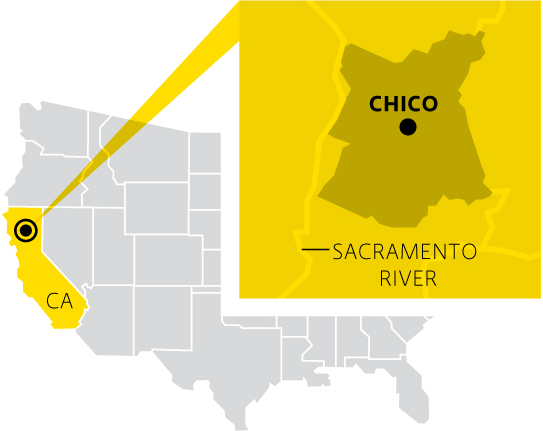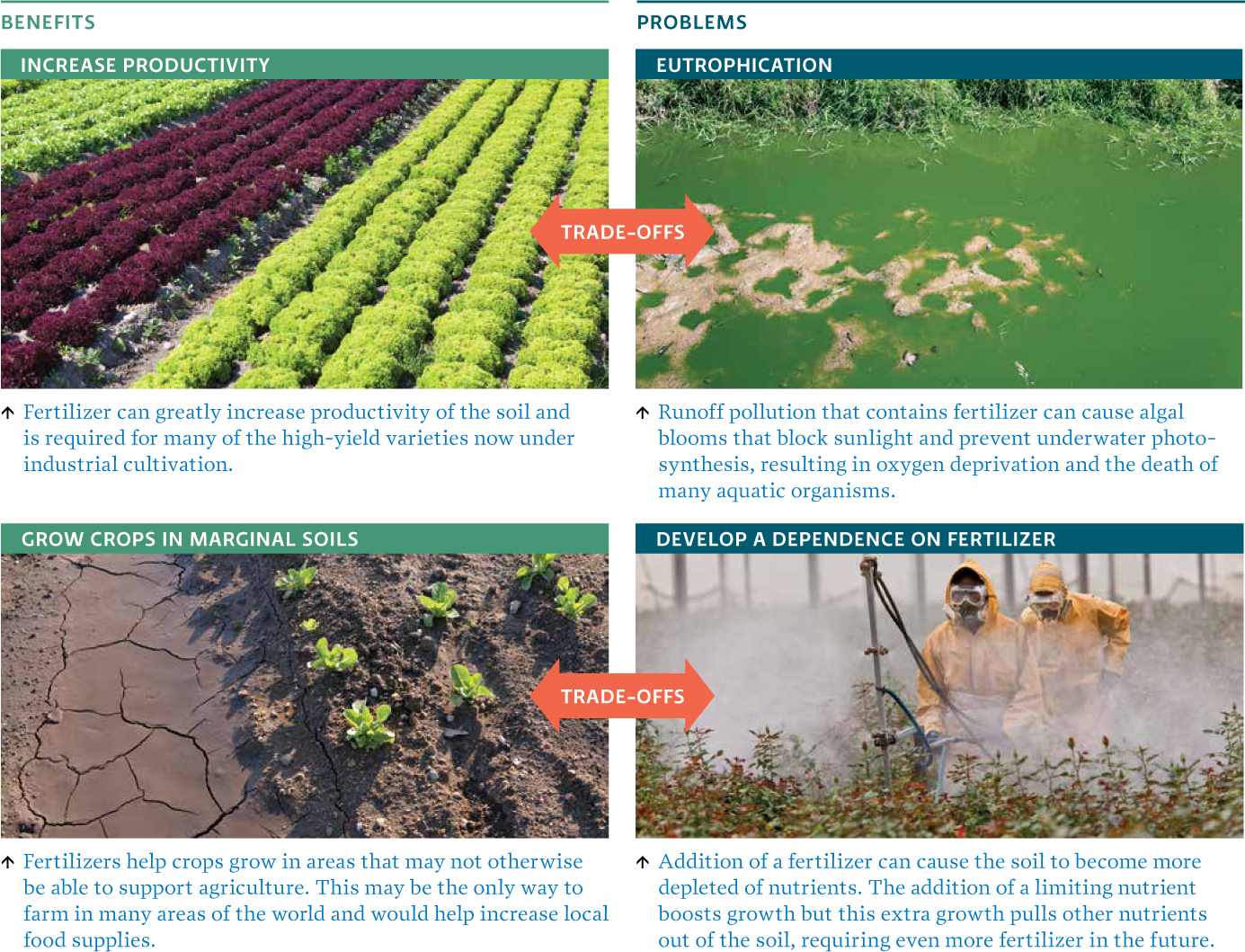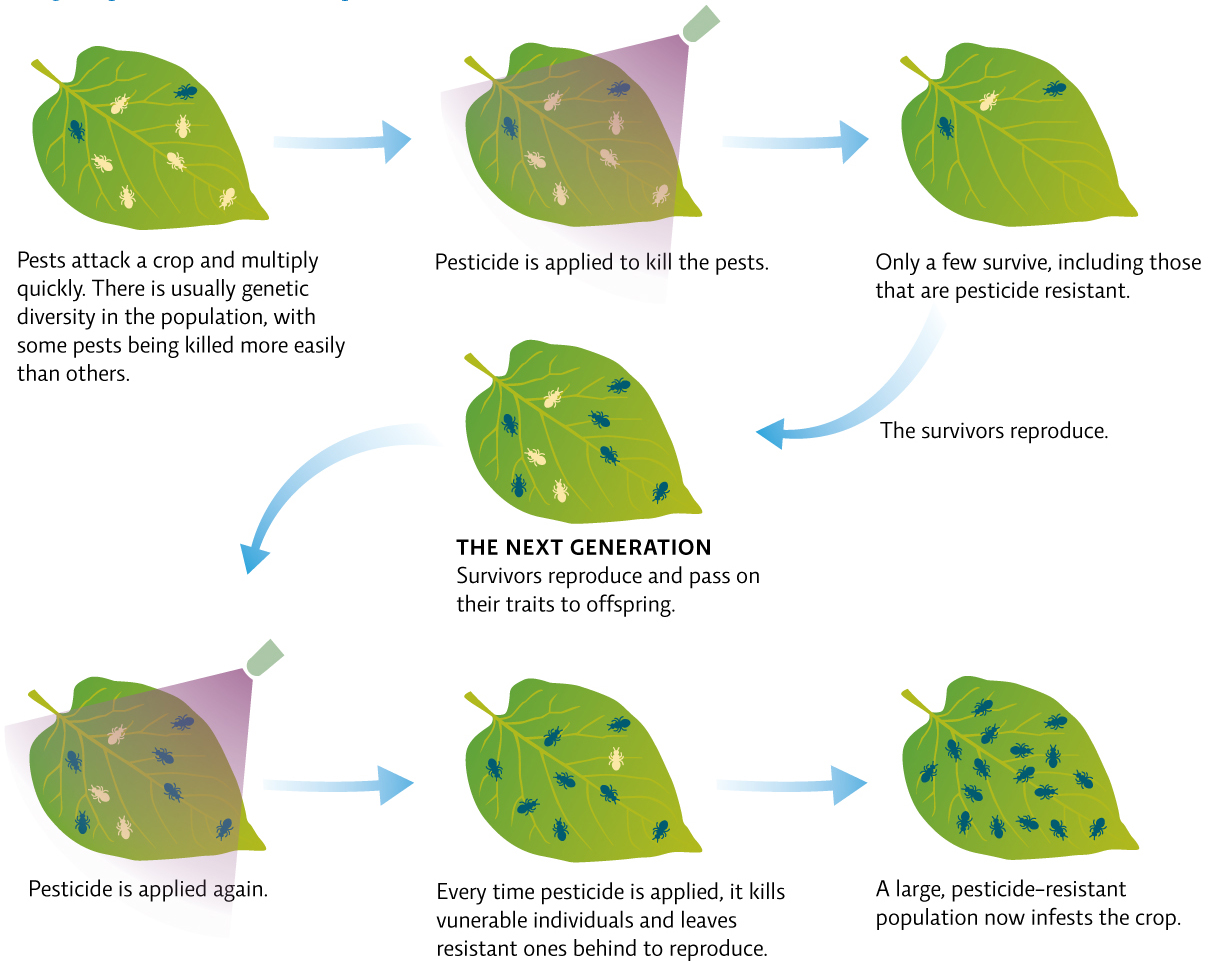18.1 Creative solutions to feeding the world
| CHAPTER 18 | AGRICULTURE |
FINE-FEATHERED FARMING
314
315

CORE MESSAGE
Modern industrial agriculture technologies and the use of genetically modified crops may help us feed the 10 billion or more people of the near future, but there are trade-offs to their use. To support the world’s population, we can implement sustainable agriculture techniques as well as look to nature for farming practices that increase productivity with less environmental impact.
GUIDING QUESTIONS
After reading this chapter, you should be able to answer the following questions:
 What modern industrial agriculture methods are used to produce food, and what are the advantages and disadvantages of these approaches?
What modern industrial agriculture methods are used to produce food, and what are the advantages and disadvantages of these approaches? Why does raising livestock often come with a higher environmental impact than plant crops?
Why does raising livestock often come with a higher environmental impact than plant crops? How can we sustainably produce crops or raise animals for food?
How can we sustainably produce crops or raise animals for food? What are the advantages and disadvantages of organic farming?
What are the advantages and disadvantages of organic farming? What is the focus of the Green Revolution 2.0, and what are the advantages and disadvantages of this technology?
What is the focus of the Green Revolution 2.0, and what are the advantages and disadvantages of this technology?
316
If there’s one thing Greg and Raquel Massa hate, it’s weeds—all varieties, but especially the azolla—an insidious fernlike plant that grows on the surface of water. Each spring, azolla plants invade the couple’s rice farm, snaking their way through the dense, muddy paddies that stretch for kilometres along the Sacramento River near Chico, California, strangling young rice plants and forcing Greg into an endless and tedious battle.
The rivalry—Massa versus azolla—has spanned three generations. Greg’s grandfather, Manuel Massa, planted the family’s (and some of California’s) first rice crops on the same land that Greg and Raquel now manage, in 1916. Back then, rice farming was a hard and uncertain life; Manuel was largely powerless against the azolla, which in some seasons claimed his entire crop.
By 1962, when Greg’s father, Manuel Jr., took over, human ingenuity and modern science had completely changed the nature of the fight. Heavy doses of chemical herbicides enabled him to obliterate the weed. And specially bred higher-yield rice varieties, along with modern farming equipment and a heavy dose of chemical fertilizers, made the family farm both efficient and profitable.
Of course, that modern approach had its own problems. For one thing, it relied on cheap energy and lots and lots of water, both of which are in much shorter supply these days. For another, it impaired ecosystem services, often gravely, because it involved clearing huge swaths of land to increase production, and focusing all resources on a single crop. On top of that, chemical fertilizers and pesticides were expensive and not especially good for the land.
Greg and Raquel wanted to find a better way. So when they took over in 1997, they converted a portion of their farm to organic agriculture. Instead of synthetic fertilizers and pesticides, organic agriculture employs more natural or “organic” techniques in the growing of crops. This type of farming uses fewer chemicals and in some cases may produce more nutritious food. For example, research by Washington State University soil scientist John Reganold showed that organically grown strawberries had a longer shelf life and higher level of antioxidants than conventionally grown berries. But organic farming forced Greg and Raquel to battle weeds much as the first Manuel had: with great difficulty.
WHERE IS CHICO, CALIFORNIA?

The trick was to lower water levels enough to kill the weeds, but not so much that the rice crop also died. Each day, Greg would wade into the paddies to see how the rice plants were faring against the azolla. Some weeks, he worried his entire crop would die. After a few seasons, the Massas started to despair: How could they make their farm environmentally friendly without losing their livelihood to an army of mangy weeds?
The Massas’ story is the story of North American farming, and by extension, of global agriculture; it’s the story of how we feed ourselves. And on a planet where population is exploding, it’s also a story of constant change.
The biggest of these changes, the ones that helped Greg’s father thrive, came in a midcentury wave of scientific development and technological innovation collectively known as the Green Revolution. The Green Revolution— which took place between the 1940s and the 1960s—was a coordinated, global effort to eliminate hunger by improving crop performance and bringing modern agricultural technology to developing countries. Working across the globe, scientists, farmers, and world leaders introduced developing countries to technologies—such as chemical pesticides, sophisticated irrigation systems, synthetic nitrogen fertilizer, and modern farming equipment—that most industrialized nations had already been using for decades. They also introduced some novel technology, namely new high-yield varieties of staple crops like maize, wheat, and rice. High-yield varieties (HYVs) are those plants that have been selectively bred to produce more than the natural varieties of the same species, usually because they grow faster or larger or are more resistant to crop diseases.
317
The combination of these forces (HYVs plus existing technology) resulted in a 1000% increase in global food production and a 20% reduction in famine between 1960 and 1990. Thanks to this pivotal chapter in our history, most experts agree that we are now producing enough food to feed every one of the planet’s 7 billion or so mouths.
As impressive as these gains are, they have come at a huge environmental cost. It turns out that while heavy doses of fertilizer can indeed boost crop production, the excess fertilizer (whatever is not used by the plants) is easily washed from fields by rain and modern irrigation practices. When this excess enters waterways, it causes algae, aquatic plants, and cyanobacteria to grow into massive blooms. These blooms, which are at the water’s surface, block sunlight, shutting down underwater photosynthesis and ultimately causing hypoxia, oxygen-poor conditions that threaten aquatic life. This process, known as eutrophication, has been a significant problem in North America, where nutrient runoff from farms in Ontario, Ohio, Pennsylvania, New York, and Michigan has led to eutrophication and an intermittent “dead zone” in Lake Erie (See Chapter 16). [infographic 18.1]

Pesticide application has also proved problematic. To be sure, pesticides kill pests and thus dramatically reduce the amount of crops lost each year to infestation. But because they are toxic, pesticides also pose a threat to human and ecosystem health. And as scientists quickly discovered, pest populations can develop resistance to almost any pesticide that we invent. When this happens, farmers must either use more of the original pesticide (which is even more toxic and spurs additional pesticide resistance), or find a different pesticide altogether. As resistance to that next pesticide develops, the cycle repeats itself. It’s like an arms race between humans and pests, with the deck perpetually stacked in favour of the pests (see Chapter 10). [infographic 18.2]

318
Environmental damage is not the Green Revolution’s only shortcoming. Even though we are producing enough food to feed the planet, many people still go hungry each day. In 2010, the United Nations estimated that some 925 million people were underfed (not getting enough calories) or malnourished (getting enough calories but not enough essential nutrients). Such poor nutrition is a root cause of more than half of the world’s diseases and more than half of all child deaths (roughly five million children per year).
Poor nutrition is a root cause of more than half of the world’s diseases and more than half of child deaths (roughly five million children per year).
Why? Because even though we are producing enough food, our production is unevenly distributed around the globe. Some countries, like Canada the United States, produce much more food than they need. In other countries, like Haiti, degraded land, natural disasters, and a lack of other resources make food self-sufficiency impossible. Armed conflict is another factor, in Africa especially. It often destroys existing crops and prevents new ones from being planted.
319

Meanwhile, food has become a global commodity, instead of a locally produced good, meaning that it can be shipped huge distances for the right price. Most food now travels some 1500 miles (2400 kilometres) from producer to consumer, using up an unsustainable amount of fossil fuel. The more food miles a product travels before reaching the consumer, the greater the ecological footprint of that food.
Into this constellation of problems, an additional 3 billion people will soon be born. Global population is expected to reach 10 billion by 2050; experts say that to feed that many mouths we will need to produce twice as much food as we are now producing. That will mean either farming more land or devising new production-boosting technologies. But we are already farming most of the cleared, arable land out there; to farm more, we would have to clear more forests, and thus destroy more natural habitats, species, and ecosystem services. And while genetic engineering offers hope that we can produce more food on the same amount of land, most experts agree that no such technology will enable as dramatic an increase as is needed.
As land degrades, population soars, and global climate warms, the story of how we feed ourselves is changing once again. We are already growing crops on most of the available land and using all that modern technology has to offer. This time, technology may not be enough. Instead of turning to the lab, we may have to turn back toward the natural world. In searching for a new weapon against the azolla, Raquel found a Japanese rice farmer who was doing just that.